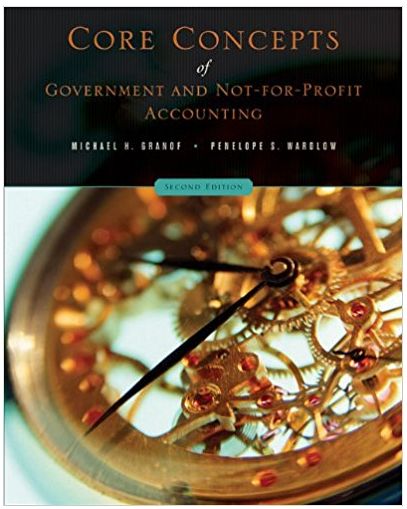During its fiscal year ending August 31, 2012, the Eaton School District engaged in the following transactions:
Question:
During its fiscal year ending August 31, 2012, the Eaton School District engaged in the following transactions:
• It established a purchasing department, to be accounted for in a new internal service fund to purchase supplies and distribute them to operating units. To provide working capital for the new department, it transferred $1.7 million from its general fund to the internal service fund.
• During the year, operating departments that are accounted for in the general fund acquired supplies from the internal service fund, for which they were billed $300,000. Of this amount, the government transferred $200,000 from the general fund to the internal service fund, expecting to transfer the balance in the following fiscal year. The supplies had cost the purchasing department $190,000. During 2012, the operating departments used only $220,000 of the supplies for which they were billed. They had no supplies on hand at the start of the year.
• The school district transferred $150,000 from its general fund to its debt service fund to make its required March 31, 2012, interest payment. This amount was paid from the debt service fund when due. It represented interest on $8 million of bonds that were issued, at par, on September 30, 2011. The next interest payment of $150,000 is due on September 30, 2012. The district also transferred $75,000 from the general fund to the debt service fund to provide for the eventual repayment of principal.
• The district transferred $4.5 million from the general fund to its pension fund (a fiduciary fund) in partial payment of its actuarially required contribution of $5.0 million for the year.
• On August 31, the district acquired school buses at a cost of $900,000. The district gave the supplier installment notes that required the district to make three annual payments of $361,903. The first payment is due in August 2013. The buses have a useful life of 10 years, with no salvage value. Select an answer to the following questions from the amounts listed after them. An amount may be selected once, more than once, or not at all.
1. Amount that the general fund should recognize as supplies expense, assuming that inventory is accounted for on a purchases basis.
2. Amount that the district should recognize as a pension expenditure in its general fund
3. Amount that the district should recognize as a pension expense in its government-wide statements
4. Amount that the general fund should recognize as nonreciprocal transfers-out
5. Amount that the district should recognize as total debt service expenditures in its governmental funds.
6. Amount that the government should recognized as total debt service expense in its government-wide statements
7. Amount that the district should recognize as other financing sources in its general fund financial statements
8. Amount that the district should recognize as capital-related expenditures (including depreciation) pertaining to its buses in its governmental fund financial statements. The district recognizes a full year’s depreciation on all capital assets in the year of acquisition.
9. Amount that the district should recognize as capital-related expenses (including depreciation) pertaining to its buses in its government-wide financial statements. The district recognizes a full year’s depreciation on all capital assets in the year of acquisition.
10. Amount that the district should recognize as non-spendable fund balance in its governmental fund statements.
a. 0
b. 75,000
c. 80,000
d. 90,000
e. 137,500
f. 150,000
g. 220,000
h. 275,000
i. 300,000
j. 900,000
k. 1,925,000
l. 4,500,000
m. 5,000,000
n. 8,000,000
o. 8,900,000
Financial StatementsFinancial statements are the standardized formats to present the financial information related to a business or an organization for its users. Financial statements contain the historical information as well as current period’s financial... Salvage Value
Salvage value is the estimated book value of an asset after depreciation is complete, based on what a company expects to receive in exchange for the asset at the end of its useful life. As such, an asset’s estimated salvage value is an important...
Step by Step Answer:

Core Concepts of Government and Not For Profit Accounting
ISBN: 978-0471737926
2nd edition
Authors: Michael H. Granof, Penelope S. Wardlow





